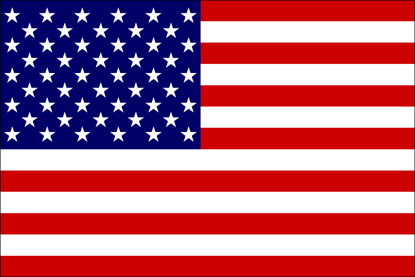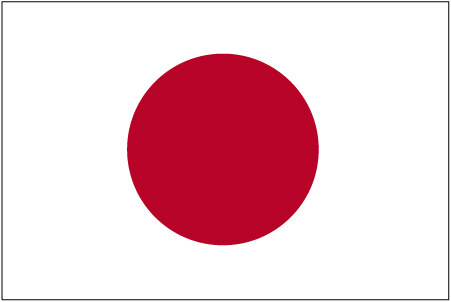C.B.S. News report on D-Day
(15 minutes)
General Eisenhower announces the invasion of France in a radio broadcast to Europe.
Click here or on the image above to watch the 17-minute movie, D-Day Minus One.
"Never Surrender"
June 4, 1940
"Finest Hour"
June 18, 1940
"So Much Owed to So Few"
August 20, 1940
"Give Us the Tools"
February 9, 1941
"V.E. Day"
May 8, 1945
"Iron Curtain"
March 5, 1946
"Soviet Expansion"
March 5, 1946
The only thing we have to fear is fear itself (at F.D.R.'s first presidential inauguration, March 4, 1933)
Pledges to keep the nation neutral (September 1, 1939)
On Keeping America out of foreign wars (Democratic Party National Convention, 1940)
America as the Arsenal of Democracy (fireside chat broadcast on Dec. 29, 1940)
Asking Congress to Declare War, Dec. 8, 1941
(7 minutes 37 seconds)
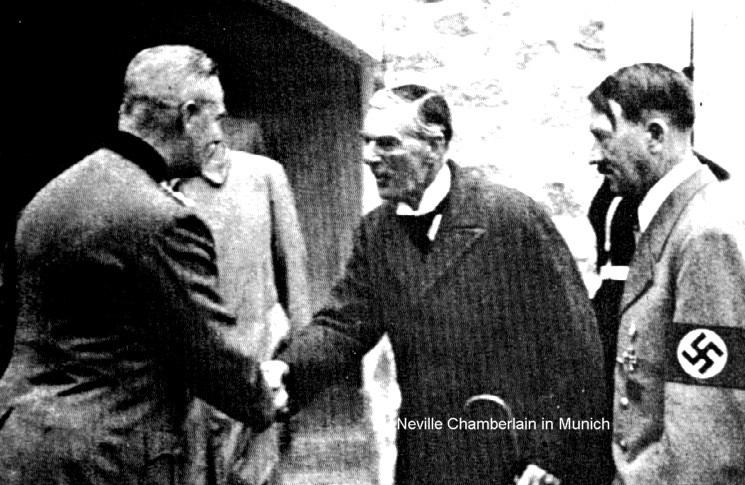
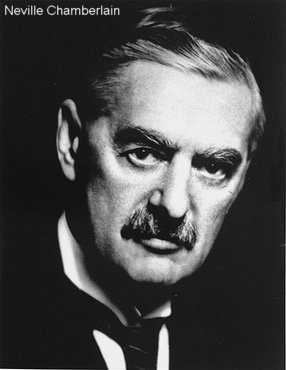
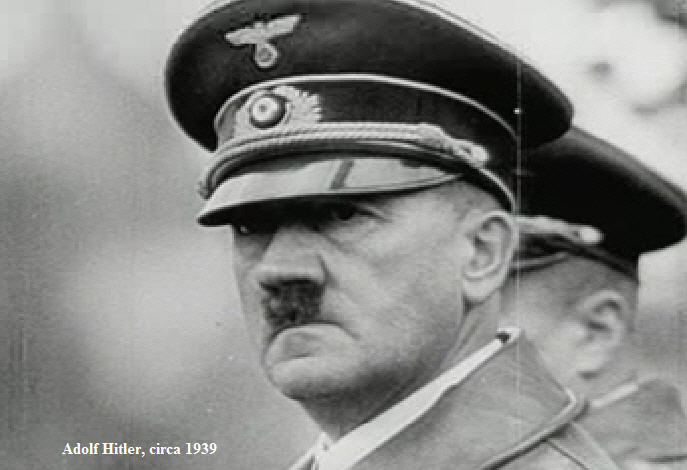
The Second World War started in Europe long before the United States was attacked by Japan. The Prime Minister of Great Britain, Neville Chamberlain, and the French Prime Minister, Edouard Daladier, were determined
to keep their countries out of war at any price and embarked on a policy of appeasement. In September 1938, the two prime ministers travelled to Munich and met with Adolph Hitler. Chamberlain, Daladier, and Hitler signed the Munich Pact. This
pact allowed Germany to annex territory in Czechoslovakia called Sudetenland. France and Britain hoped this latest concession, continuing a pattern of concessions to Germany, would avert war. Edouard Daladier returned to France. His nation
hid behind the Maginot Line, a series of bunkers and tank traps, along the French eastern border. Mr. Chamberlain returned from Munich confident he had secured Britain's safety from Germany. He was wrong. The latest concession to Hitler only
emboldened him.
The war for Britain and France started after September 1, 1939 when Germany invaded Poland. The Soviet Union invaded Poland from the east on September 17 (and the Finnish and other countries in 1940 and only joined the
Allies after Germany attacked her on June 22, 1941). On September 2, 1939 Chamberlain must declare war against Germany after Germany attacked Poland and would not withdraw. Britain and France would not start shooting until France is invaded on May 10,
1940. France surrendered in a month, on June 22, 1940. The United States, in 1939, wanted to stay out of what was considered "Europe's war". Franklin D. Roosevelt (F.D.R.) promised on September 1, 1939 America would stay neutral.
Interestingly enough, on September 21, 1939, Roosevelt urged Congress to repeal the U.S. Neutrality Law (the speech is available on WJSV's recorded broadcast day). In 1940, F.D.R., during the Democratic Party Convention, again pledged the United States
would not participate in foreign wars but he signed legislation a year later, on March 11, 1941, enacting the Lend-Lease Program. Lend-Lease provided billions of dollars of war material to the United Kingdom, Soviet Union, China, France, and other Allied
nations.
Great Britain Fights
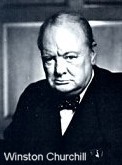 Back in the United Kingdom, war was on;
Chamberlain was out and the feisty Winston S. Churchill was in as the British Prime Minister. On June 4, 1940 Churchill urged his country to never surrender until the "New
World steps forward with its power and might". Churchill addressed the House of Commons again on June 18, 1940 to prepare the U.K. for all-out war against Germany and for the Battle of Britain. He encouraged the people by stating if they are the
victors, their institutions will remain and Europe will be free but if they fail the world will "sink into an abyss of a new dark age" and Churchill expressed his hope this would be Britain's finest hour.
During the Battle of Britain in August 1940, Mr. Churchill addressed the House of Commons and stated never before had so much been owed to so few, referring to the heroic defense provided
by the Royal Air Force. On February 9, 1941, Mr. Churchill appealed to the U.S. to give Britain the tools to finish the job.
Back in the United Kingdom, war was on;
Chamberlain was out and the feisty Winston S. Churchill was in as the British Prime Minister. On June 4, 1940 Churchill urged his country to never surrender until the "New
World steps forward with its power and might". Churchill addressed the House of Commons again on June 18, 1940 to prepare the U.K. for all-out war against Germany and for the Battle of Britain. He encouraged the people by stating if they are the
victors, their institutions will remain and Europe will be free but if they fail the world will "sink into an abyss of a new dark age" and Churchill expressed his hope this would be Britain's finest hour.
During the Battle of Britain in August 1940, Mr. Churchill addressed the House of Commons and stated never before had so much been owed to so few, referring to the heroic defense provided
by the Royal Air Force. On February 9, 1941, Mr. Churchill appealed to the U.S. to give Britain the tools to finish the job.


Victory Over Japan
After victory over Germany in Europe, the focus of the Allies turned to forcing Japan to surrender. In July 1945, while President Harry Truman was in Potsdam, he warned Japan of a "rain of ruin" if she did not surrender. Although the Japanese continued to lose battles against Allied forces and her air and naval forces were severely reduced, the Supreme War Council refused American demands for unconditional surrender. Japan prepared for what was believed to be the inevitable invasion; an invasion was not to occur. A solemn President Truman announced the atomic bombing of Hiroshima on August 6, 1945. On August 9, 1945, a second atomic bomb was detonated above Nagasaki. The Japanese officially surrendered on August 15, 1945 and Truman announced Japan's unconditional surrender to the Allied Forces.
Japan formally signed the Instrument of Surrender aboard the American Battleship Missouri on September 2, 1945. The U.S.S. Missouri was anchored in Tokyo Bay for the ceremony.
N.B.C.
B.B.C.
Harry Truman
Winston Churchill
News reports and comments on the victory in Europe:
...after returning from meeting Adolf Hitler in Munich
...announces the declaration of war on Germany

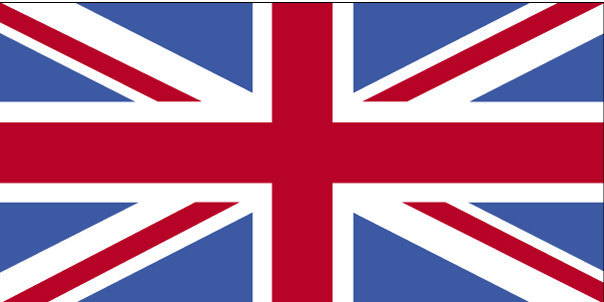
U.S.A. Enters World War 2
The scope of the war changed after Japan attacked the U.S. naval base at Pearl Harbor, in Hawaii, and other American assets in the Pacific on December 7, 1941. Reports of the attacks only dribbled in at first with news announcements breaking into regular programming.
In the evening of December 7, Eleanor Roosevelt was on the radio rallying the "free and unconquerable people". At the time, there was fear the Japanese were preparing to invade California. On December 7, 1941 striking back at Tokyo was on every American's mind.
Newsreels would later report and show the destruction of the Pearl Harbor attack. (F.Y.I.: About six minutes into News Parade Newsreel, the news reel reports the fire and sinking of the French luxury liner S.S. Normandie. The ship, at port in New York when America entered World War 2, was seized by the U.S. Government and was renamed the U.S.S. Lafayette. The video shows the Normandie in 1935, before France surrendered to Germany, when she arrived in America, and fire fighters attempting to subdue the blaze on February 2, 1945. The ship would partially sink into the Hudson River and the question of the day was: sabotage or accident?).
On December 8, 1941, President Franklin D. Roosevelt asked the joint session of Congress to declare war against the Empire of Japan and referred to December 7 as a "date that will live in infamy". Soon the United States, along with the other Allies, would be fighting the Axis Powers (Germany, Japan, Italy, Hungary, Romania, and Bulgaria) in what is called World War II.

C.B.S. News Flash
B.B.C. Announcement
C.B.S. analysis of Hawaiian
and Philippines bombings
KGU, Honolulu call to N.B.C., New York
Eleanor Roosevelt addressed the nation in a radio broadcast on on December 7, 1941
Watch a portion of Franklin Roosevelt's December 8, 1941 address to Congress by clicking on the image above. A larger version of the video is located here. The clip includes footage of Nomura Kichisaburo, the Japanese ambassador to the United States.
The war would continue for more than three years. America would fight on two fronts - Europe and the Pacific. America would suffer more battle losses. Eventually, through valor of our troops and possibly, some divine intervention, the tide would turn against the Axis Powers. World War 2 ended in Europe in May 1944. The Japanese continued to fight until finally surrendering after two atomic bombs destroyed two Japanese cities in August 1945.
Six months after the bombing of Pearl Harbor, on May 6, 1942, the United States forces on the Philippine island of Corregidor, in Manila Bay, surrender to Japan.
D- Day: The Allied Invasion of France
On June 6, 1944, Supreme Allied Commander, Dwight D. Eisenhower announced D-Day - the Allied invasion of France. This invasion was part of a plan to liberate Europe from Nazi Germany. The invasion involved troops from the United States, United Kingdom, and Canada. The U.S. Army Air Forces produced a 17-minute movie about the events that occurred behind enemy lines before June 6 entitled D-Day Minus One. This motion picture was part of the "Mighty 7th War Loan" and describes the efforts of the 82nd Airborne, 101st Airborne, and the 9th Troop Transport Command. If you can get past the introduction, it's worth watching.
Photographs of Dwight D. Eisenhower from http://www.eisenhower.archives.gov/
Victory in Europe
On May 5, 1945, victory was achieved in Europe (V.E. Day) and N.B.C. and the B.B.C. reported Germany's surrender. President Harry Truman soon took to the airwaves informing the people the war had been won but we were only half way done. Winston Churchill acknowledged victory but was also cognizant of the fact Japan still must be subdued.
News Parade Newsreel
(click the image to watch the film)
Germany's surrender,
May 5, 1945
Potsdam Ultimatum,
July 1945
Hiroshima Announcement,
August 6, 1945
Japan's Unconditional Surrrender,
August 1945
Kate Smith comments on D-Day Invasion and asks Americans to pray to God for victory and to protect loved ones in this June 7, 1944 radio broadcast.
A news summary describing D-Day events and analyzing German news reports starts about 3 minutes into this 14-minute audio file.
Please note: The audio and video on this page require Windows Media Player and may take a moment to load.
Neville Chamberlain
Franklin D. Roosevelt Speech Clips
Winston S. Churchill Speech Clips
Listen to President Roosevelt ask Congress to Declare War, December 8, 1941
(7 minutes 37 seconds)
For more information about the Japanese surrender and photographs of the surrender ceremony aboard the U.S.S. Missouri, visit the Japan Surrenders page.
Harry Truman Speech Clips
A Boeing B-29, named Bockscar, was used to drop a Fat Man atomic bomb on Nagasaki, Japan.
To view additional pictures and to learn more about the plane and the Fat Man atomic bomb, click here.
Listen to General Douglas MacArthur invite the Emperor of Japan's representatives to sign the Instrument of Surrender.
Please note: The audio and video on this page require Windows Media Player. The player will launch in a new window and the media may take a few moments to load.


















